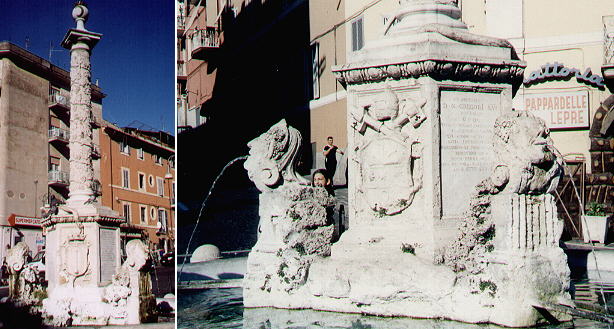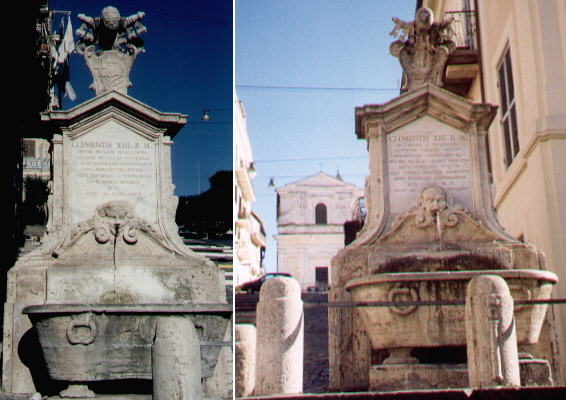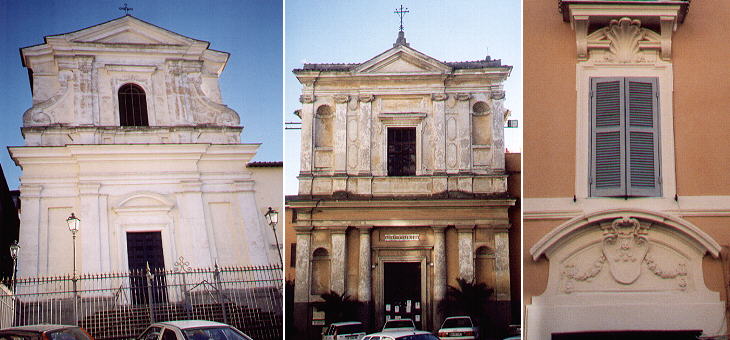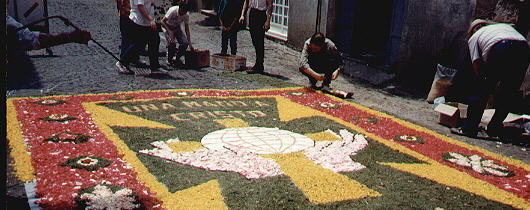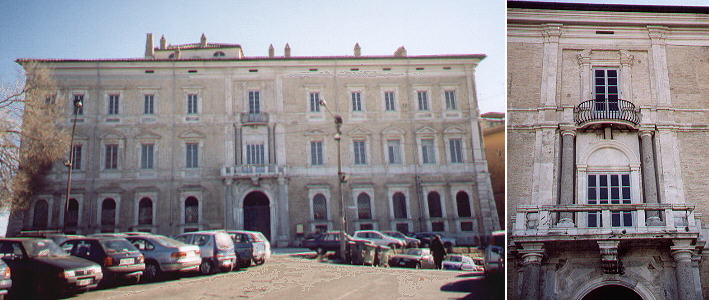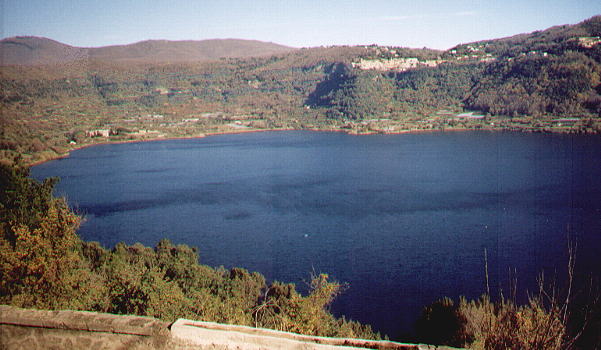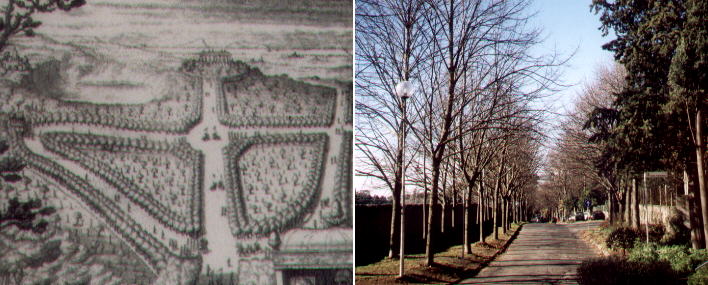  Giuseppe Vasi's Digression - Genzano
Genzano was a small town on the top of a hill overlooking the lake of Nemi when in 1564 it was acquired by the Cesarini family (later on united with the Sforza).
The Sforza Cesarini redesigned Genzano by following the model of the
Tridente of Piazza del Popolo in Rome with large streets linking its main monuments.
At the entrance of Genzano three streets start from a round square: they lead to S. Maria della Cima, the main church of Genzano, to the Cesarini Sforza palace and to the church of the Capuchins which are all located at a higher level. In the lack of a Roman obelisk the starting point of the three streets is marked by a fountain with a tall column decorated with wine branches and thus called Fontana del Vino (Wine Fountain) and which actually sprouts wine once a year. It is a 1776 work by Virginio Bracci, son of Pietro Bracci one of the most celebrated Roman sculptors in the first half of the XVIIth century.
Virgino Bracci designed also two fountains on the street leading to S. Maria della Cima, which are called Fontane Clementine after the large coats of arms of Clemens XIII and Clemens XIV on their top.
The cathedral of Genzano is located at the top (It. cima) of the crater surrounding the Lake of Nemi. A medieval church was most likely built upon a Roman temple overlooking the lake. The current building has a different orientation (towards Via Appia) and it was designed in 1636 by Giovanni Antonio De Rossi. SS. Annunziata is another historical church of Genzano. Its 1786 fašade shows already some elements of Neoclassicism.
On the first Sunday after Corpus Domini the street leading from Fontana del Vino to S. Maria della Cima is covered with petals of flowers to form a sort of tapestry. It is a tradition which dates back to the end of the XVIIIth century and it is called l' Infiorata (It. fiore, flower).
At the beginning the Cesarini lived in a sort of castle controlling the entrance to the town. Over time the building was enlarged until in 1713-30 the duke Gaetano Sforza Cesarini entirely reshaped the family palace with the assistance of the architects Ludovico and Domenico Gregorini. The fašade shows the use of some optical "tricks" to give the building a taller and larger appearance: the vertical elements become progressively thinner moving upwards, while the horizontal distance between the windows gets smaller moving from the center.
The dark and deep waters of the lake of Nemi were called Specchio di Diana (Diana's Mirror) by the Romans, because the woods surrounding the lake seemed a perfect setting for the hunting goddess. In the XVth century parts of two Roman ships were found and their presence in the closed volcanic lake was attributed to the holding of naumachie (fights between ships). In 1928 the ships were excavated and restored: experts came to the conclusion they were used during religious ceremonies in honour of Diana, to whom a nearby sanctuary was dedicated. Unfortunately in 1944 war events led to the loss of the ships.
Genzano was renowned in the past for its tree-lined alleys called olmate (after olmo, elm), which only in part have survived the damages of World War II and the needs of modern life. Excerpts from Giuseppe Vasi 1761 Itinerary related to this page:
Next step in your tour of the Environs of Rome: Civita Lavinia See my Home Page on Baroque Rome or my Home Page on Rome in the footsteps of an XVIIIth century traveller. |
All images © 1999 - 2003 by Roberto Piperno. Write to romapip@quipo.it
